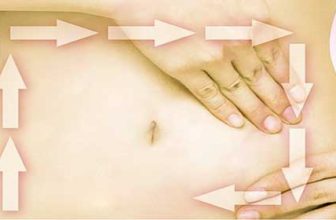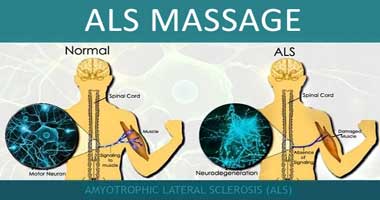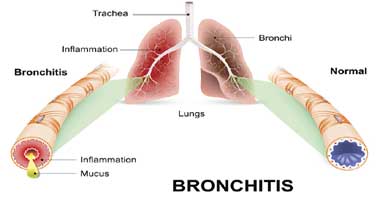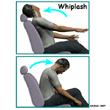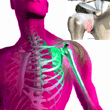
 Frozen shoulder or Adhesive Capsulitis is a painful, significant restriction of active and passive range of motion at the shoulder.The restriction is most frequently in shoulder abduction and external rotation.In Frozen Shoulder, the joint capsule becomes tightened and inflexible.
Frozen shoulder or Adhesive Capsulitis is a painful, significant restriction of active and passive range of motion at the shoulder.The restriction is most frequently in shoulder abduction and external rotation.In Frozen Shoulder, the joint capsule becomes tightened and inflexible.
Frozen Shoulder Massage Therapy Treatment Goals:
Frozen Shoulder – FREEZING Stage: ( 2-9 months)
- Decrease pain, inflammation
- Prevent decrease in ROM and maintain ROM
Frozen Shoulder – FROZEN Stage ( 4-12 months)
- Frictions
- Glenohumeral Joint mobilizations
- Increase: ROM, strength, prevent atrophy
- Decrease: Trigger points, adhesions and hypertonicity
Frozen Shoulder – THAWING Stage
- Quite Vigorous
- Fascial work
- Cross Fiber Frictions
- Passive Stretching
Contraindications for Frozen Shoulder Massage:
- Aggressive stretches and joint play mobilizations Cid in acute stage
- Frictions with anti-inflammatories
Frozen Shoulder Massage Treatment:
ACUTE Frozen Shoulder Massage Treatment:
PRONE:
- General treatment to trapezius, levator scapula, rhomboids, latissimus dorsi, serratus Anterior, erector spinae, deltoids and Rotator Cuff muscles
- Locate subscapularis, have the client internally rotate their humerus, Do some muscle stripping, Ischemic compressions, cross fiber frictions, Pain free Post Isometric Relaxation
- Joint play to thoracic spine, ribs, and scapula
- Client at the edge of the table so affected arm can hang in flexion. Therapist slowly moves humerus passively in flexion plane.
SUPINE:
- Fascial technique to chest and affected shoulder
- Pectoralis major and deltoid treatment, grasp stretch / GTO to pectoralis major
- Pectoralis Minor, subclavius, biceps, triceps massage with Ischemic compressions, muscle stripping
- Treatment to Unaffected: shoulder, arm, neck, with Deep Muscle stripping, kneading, GTO
- Mild joint play
- Cervical spine and sternoclavicular joint treatment
- Pain free stretch to upper trapezius and levator scapula
SUBACUTE and CHRONIC Frozen Shoulder Massage Treatment:
PRONE
- Treatment to affected shoulder, Ischemic Compressions, Deep Muscle Stripping, and Post Isometric Relaxation to subscapularis
- Joint Play to thoracic spine, ribs, scapula
- Passive stretch of glenohumeral joint
- Hang affected arm over side, active pendulum exercise
SUPINE
- Treat same as in acute : Pectoralis. Major, minor, subclavius, deltoid, upper trapezius
- Tendons of Rotator Cuff muscles with Cross Fiber Frictions followed by ice/stretch
- Rhythmic stabilizations
- Active Resisted ROM to muscles surrounding the glenohumeral joint
Frozen Shoulder massage contraindications, contraindications frozen shoulder
Signs and Symptoms for Frozen Shoulder:
ACUTE Frozen Shoulder Stage ( 2-9 mos) — also called the Pain Stage or Freezing Stage
- gradual onset of pain, perhaps following a minor trauma
- pain severe at night, unable to lie on affected side. Pain is at outer aspect of shoulder
- muscle spasm in Rotator Cuff muscles
- inflammation of the GH capsule
- stiffness gradual, 2-3 weeks after initial pain
- may be unilateral or bilateral, non-dominant limb may be more commonly affected
- acute and subacute stages blend into each other
SUBACUTE Frozen Shoulder Stage ( 4-12 months) — also called the Frozen Stage or — STIFFNESS Stage
- severe pain starts to diminish
- stiffness becomes primary complaint, interferes with daily living, primary restriction in external rotation, abduction, and internal rotation. Pain at end ranges of motion
- disuse atrophy of deltoid and Rotator cuff muscles
CHRONIC Frozen Shoulder Stage – also called the Thawing Stage
- pain localized to lateral arm and continues to decrease. Person is not awakened at night
- motion and function gradually return. Full ROM not always regained.
- Often resolves spontaneously in 2 years, but some people remain symptomatic for 5-10 years.
Self Care for Frozen Shoulder:
ACUTE Frozen Shoulder Self Care
- Sleep on unaffected side
- Stretch subscap frequently
- Avoid kyphotic positions
- Cold hydro to affected muscles
- Passive pendulum- letting arm hang and swaying back and forth
- Active Free ROM to thoracic Spine and Cervical Spine
- Isometric contraction of the rotator cuff muscles
SUBACUTE/ CHRONIC Frozen Shoulder Self Care
- – Hot hydro to affected shoulder
- – Pendulum exercise – letting arm hang and swaying back and forth
- – Cervical spine,thoracic spine Active Free ROM
- – stretch upper trapezius and levator scapula
